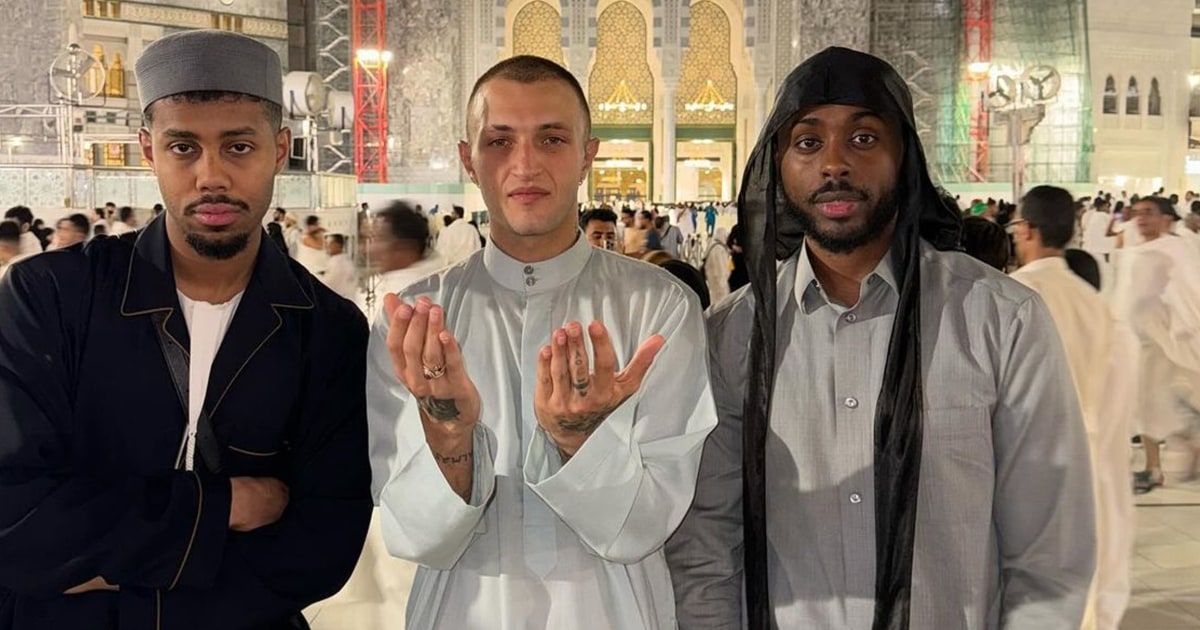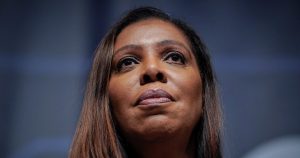
[ad_1]
Actor and producer Anwar Hadid, younger brother of supermodels Bella and Gigi, posted photos on Instagram recently of him performing Umrah, the Muslim pilgrimage to Mecca, Saudi Arabia. It’s one of the most sacred acts for a Muslim, and it holds particular significance during the holy month of Ramzan (or Ramadan, depending on where you’re from). Hadid’s series of pictures included Sudanese-Canadian artist and musician Mustafa Ahmed, who goes by Mustafa, and content creator Sharky, among other young, Muslim cultural tastemakers.
Seeing Islam being woven into popular culture so beautifully and the swell of solidarity offsetting this climate of Islamophobia is encouraging, to say the least.
The post now has close to a quarter million likes — something unusual for Hadid who, although he has 7.1 million followers, tends to garner likes that hover in the thousands or so. The comments section is flooded with messages (and emoji) of support.
When I first saw the image, it was arresting. Seeing a pop cultural figure so explicitly celebrate their Muslim faith, reclaiming it as their own in the process, always feels surprising and unfamiliar, in a beautiful way — all the more so as we navigate a time that feels “reminiscent of post 9/11 Islamophobia,” as NBC News put it.

The overwhelmingly positive response to Hadid’s post reflects a larger and palpable shift in pop culture around Islam in the U.S. and the Global North, particularly among younger demographics. The reasons are multifarious: a shifting zeitgeist that has more tolerance, appetite or curiosity for minority experiences, including those of Muslims; or, more recently, the swell of pro-Palestinian support that has engendered solidarity for Muslims, particularly among a younger subset of the population here in the U.S. and across the world. But a large part of this shift can also be attributed to how younger Muslims, especially those in the spotlight, are reclaiming the religion on their own terms.
This is something I’ve been particularly moved by as someone who found their way back to Islam in recent years. I grew up culturally Muslim and Christian as a mixed-race kid and spent part of my childhood in Pakistan, which has drastically changed in the decades since. For significant swaths of Pakistan’s population (depending on locale, ethnicity and/or class, for example), it was a relaxed and in many ways socially liberal environment. The religious fundamentalists we hear about so much today existed on the periphery rather than in the mainstream, and they promote a version of Islam that has never felt like home to me. In the intervening decades, the political landscape became increasingly hijacked by religious extremists, coinciding with places like Saudi Arabia effectively exporting regressive and oppressive interpretations of the religion, such as Wahhabism, which subscribes to a literal and draconian interpretation of the Quran. As a queer, trans Muslim, therefore, it took me time to reclaim the religion as my own.
As an adult, I subscribe to Sufisim, a mystical branch of Islam which is itself inherently queer in its roots — from the beloved’s ambiguous gender in centuries-old Sufi poetry to same-sex relationships between early Sufi poets.
The religious fundamentalists we hear about so much today existed on the periphery rather than in the mainstream, and they promote a version of Islam that has never felt like home to me.
The visual subversiveness of Hadid’s post reflects this larger trend among young Muslims — and notably Muslim popular cultural figures — seeking to reclaim more expansive interpretations of the religion. Those with conservative and/or literal interpretations of the Quran, for instance, would contend that tattoos are haram (or sinful). Yet Hadid shows himself shirtless at Mecca, displaying tattoos on his chest, with hand tattoos visible in other photos. His post visually subverts the cultural logic of a mainstreamed, more conservative interpretation of Islam.
The subtexts of the images cut both ways: Most of the men in Hadid’s post donned jalabiyas, long tunics often worn by men across the Muslim world, and typical for Umrah. In this way, his post visually subverts a Western cultural logic, too, through the celebration of an aesthetic that in the U.S., for example, can make you a prime target for a hate crime.
For many of us who grew up Muslim in the West — whether culturally, practicing or simply looking like we might be — we spent a lot of our life concealing or whitewashing our identity throughout the 1990s and early 2000s, and of course especially after 9/11. I remember scrubbing my hands until they were raw after being ridiculed in middle school for having henna dyed on my hands after my cousin’s wedding — a tradition in Pakistani weddings. My brother was compelled to shave his beard anytime he traveled because of the incessant racial profiling. So seeing Islam being woven into popular culture so beautifully and the swell of solidarity offsetting this climate of Islamophobia is encouraging, to say the least.
In his latest single, “Imaan” (which translates to “belief” or “faith”), Mustafa entwines Egyptian and Sudanese instruments into a song which otherwise sounds like American folk music. The different sounds are at once jarring and complimentary.
“‘Imaan’ is a love song between two people in search of God and purpose,” Mustafa told “Complex UK.” “It’s about longing for all that we don’t have evidence of, two Muslims journeying through their love of borderless Western ideology and how it contradicts with the modesty and devotion in which they were raised. ‘Imaan’ sonically represents this tussle too; the Sudanese strings and Egyptian oud woven into the bed [of] American folk chords and drums. This tapestry, this collision is the song, is the romance, is the person Mustafa is. How it’s never enough, or too much.”
Mustafa’s reference to this ideological tension within Islam summarizes exactly what so many of us younger Muslims must navigate.
Images such as Hadid’s — and the associated narratives — are important. To anyone scrolling through Instagram, they offer a counternarrative, albeit bite-sized, to many of the tropes associated with Islam. They signify a growing number of young people reclaiming their religious identities on their own terms. The most important thing we can do as Muslims is reclaim the religion both from oppressive ideologues and from being hijacked by xenophobia outside the religion.
Yes, in many ways, it’s just an Instagram post. But it’s also part of a wider movement to usher in a version of Islam that is more inclusive and, in my opinion, more authentic.
[ad_2]
Source link
